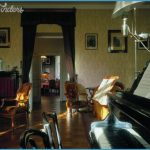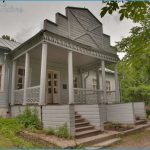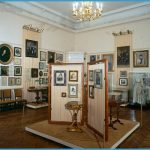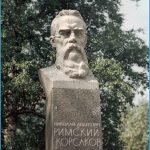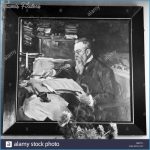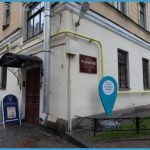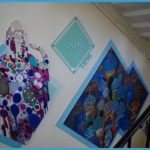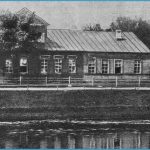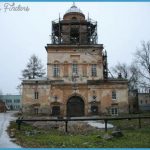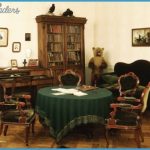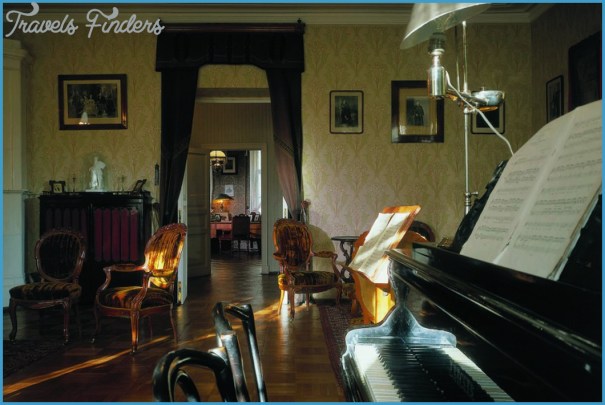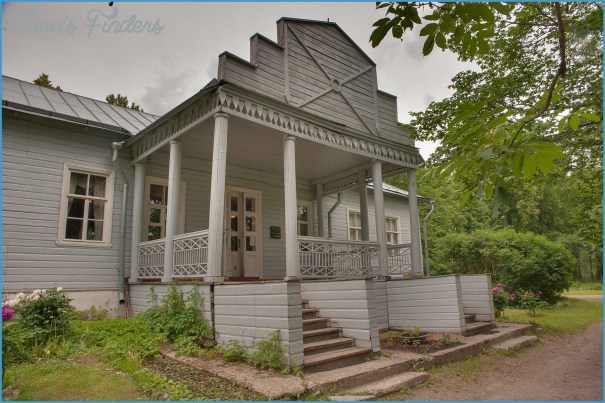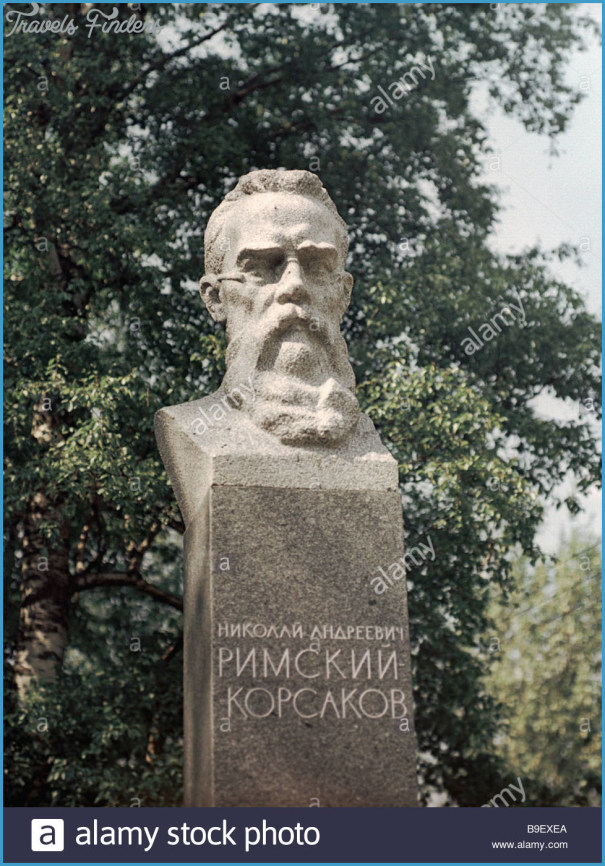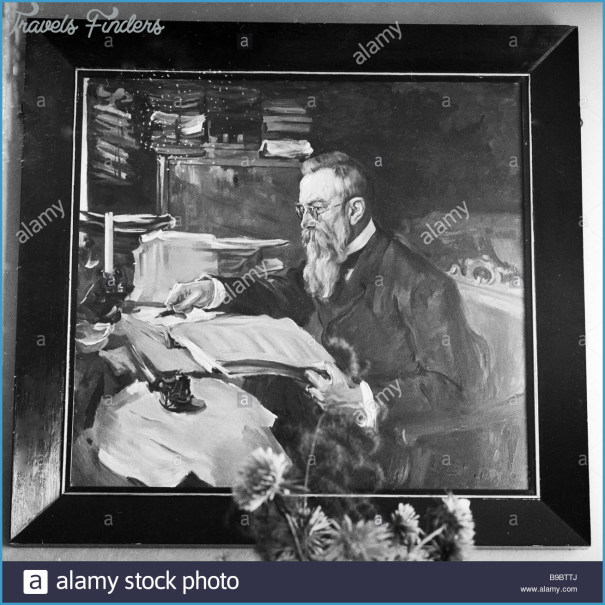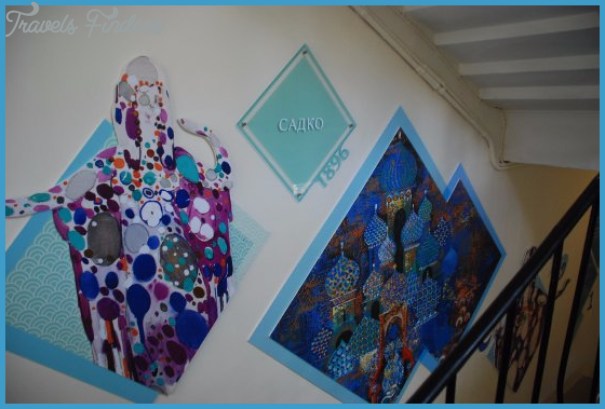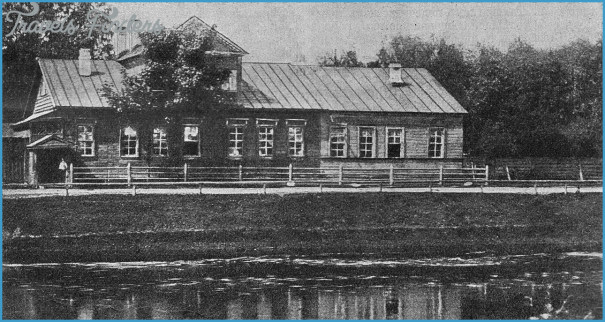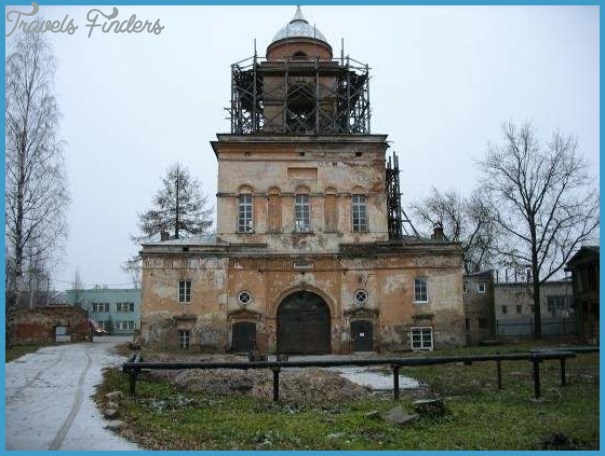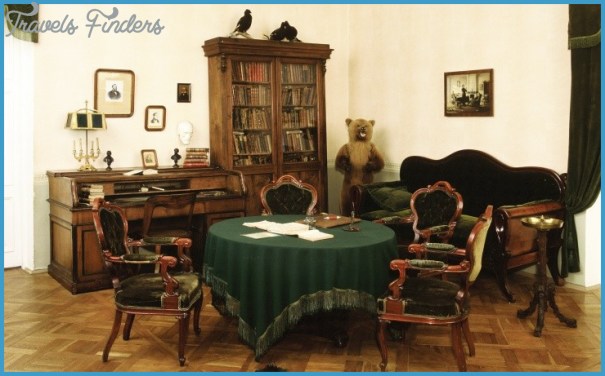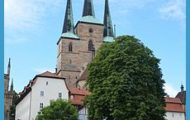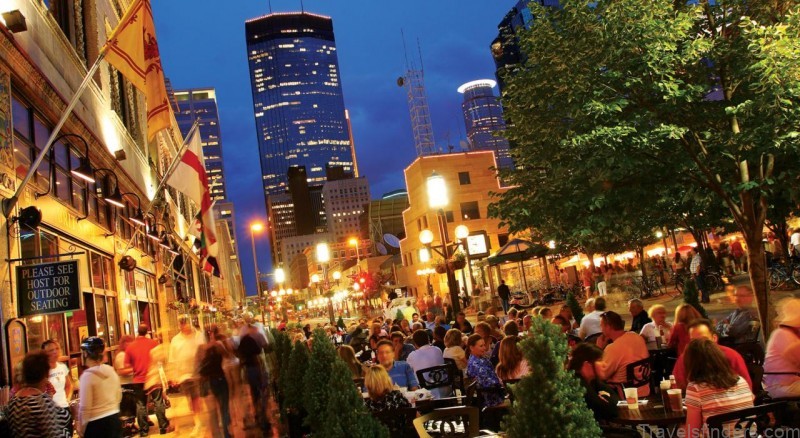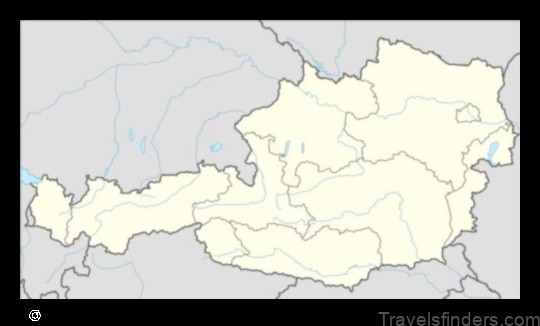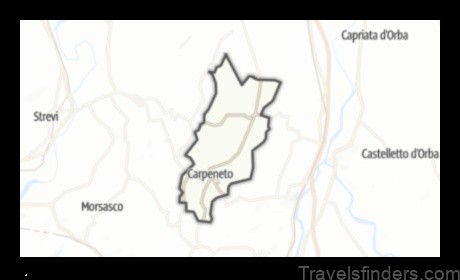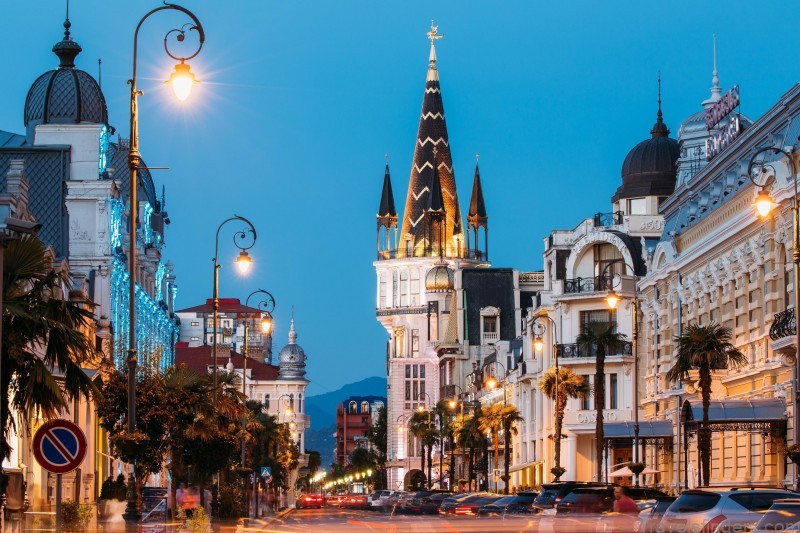RIMSKY-KORSAKOV MUSEUM
To a traveller unused to Russia, a tour of Rimsky-Korsakov sites – his birthplace in Tikhvin, his St Petersburg apartment and grave, and his summer homes near Lake Pyesno – provides not only a fresh understanding of the composer but also unforgettable glimpses of pre-revolutionary Russian family life.
Tikhvin is an ancient cathedral city about 210 km east of St Petersburg, which in the 19th century was a centre of trading and handicrafts. It was also the centre of the Novgorod district over which Nikolay Andreyevich Rimsky-Korsakov’s father presided as civil governor. The Rimsky-Korsakovs were a distinguished military family whose wooden house still enjoys a view across the Tikhvinka River of the Tikhvin Rimsky-Korsakov’s birthplace at Tikhvin Family drawing-room at Tikhvin monastery and cathedral. Born there in 1844, Nikolay Andreyevich spent his first 12 years in Tikhvin before moving to St Petersburg to attend the naval academy, by which time he had begun learning the piano and had even tried his hand at composing.
The birthplace museum, in what is now Rimsky-Korsakov Street, was opened to the public by the composer’s children on his centenary in 1944 and tells the story well. Nikolay’s father’s green study with its icons, its masonic relics and the armchair made by his serfs evokes the image of authority reflected in Rimsky-Korsakov’s memoirs. In his mother’s blue day-room at the opposite end of the house, where she kept a parrot, the young composer learnt about flowers, stars and, no doubt, heard legends and fairy-tales.
RIMSKY-KORSAKOV MUSEUM Photo Gallery
The vibrant red drawing-room at the centre of the house, furnished with mid-19th-century tables and chairs and a Lichtenthal square piano brought from St Petersburg, reminds us that the young boy was taught music at home, as well as to draw and to speak French. His first Becker grand is kept (in playing condition) in the adjoining room, today used for occasional small concerts. At the rear of the house is a room devoted to his elder brother, who pursued a distinguished naval career; it is filled with curiosities from his voyages, a model of a schooner, his maps, letters, stories and drawings. Upstairs, the front loft bedroom, with its balcony view and single bed with a coverlet made by his mother, is where the composer slept in summertime. Elsewhere there are displays showing such objects as his childish drawings, his cadet report card and gifts from his contemporaries. Other than for trips abroad and summers in the country, Rimsky-Korsakov lived in St Petersburg for the rest of his life. For his last 15 years (1893-1908) he lived at 28 Zagorodniy Prospect where he and his wife, Nadezhda Nikolayevna Purgold, and their five children had a spacious flat (no.39) on the third floor. Since 1971 it has been a Rimsky-Korsakov museum. As with all the museums to their father, his own three sons (all of them men of distinction in their own right) and their children provided the collection of furniture, photographs, tributes and personal possessions. Some of the rooms have been painstakingly re-created as they Block of flats in St Petersburg where the Rimsky-Korsakovs lived were in his own day – the study, the music salon and the dining-room in particular – while others now perform more routine museum functions. The rooms that once served as the kitchen and for sleeping have become a recital hall, seating 60; concerts take place frequently from October to May, and during the intervals the audience is invited to tour the museum.
Most memorable are the study and the salon. The former was shared by husband and wife. He had a large green baize-covered desk near the windows and she a smaller one behind it and to the left (see p.9). His wife for 37 years, Nadezhda was an excellent pianist and was trained as a composer, although she devoted her time to making arrangements of her husband’s music and, later, to publishing his posthumous musical and literary works. The salon, with its 1902 Becker grand and arrangements of green velvet chairs, portraits and mirrors, was where every other Wednesday the Rimsky-Korsakovs held music parties at which musicians such as Stravinsky and Shalyapin performed. In the entry hall and vestibule connecting the two rooms Rimsky-Korsakov’s fur-lined coat and hat still hang.
For six summers between 1894 and 1905 the Rimsky-Korsakovs stayed at a lakeside dacha at Vechasha, beyond the town of Luga, about 190 km south of St Petersburg, some seven kilometres to the The Rimsky-Korsakov dacha at Lyubensk right (towards Plyussa) off the Pskov road. Always referring to it as dear Vechasha, the composer wrote in his memoirs of working there on his operas Christmas Eve and Sadko: I remember that I often composed on the long plank footbridges running from the shore to the bathing pavilion. The bridges ran down among bulrushes; on one side the tall bending willows of the garden were visible, on the other lay the wide expanse of Lake Pyesno’. The bridges are still there. During the summer of 1897 he set Pushkin’s Mozart and Salieri, followed by The Tsar’s Bride in 1898 and The Tale of Tsar Saltan in 1899. Evenings were devoted to family chamber music.
He spent his last two summers at Lyubensk, just over a kilometre away from Vechasha. In August 1907 Rimsky-Korsakov proudly described the dacha in a letter: its view of the lake, immense orchard and abundance of lilacs, jasmine and peonies. During that summer he completed The Golden Cockerel and his memoirs. The following year he was there for only 18 days before, on the night of 7-8 June, he died during a violent storm. His funeral service was held in the church of the St Petersburg Conservatory and he was buried in the musicians’ section of the Tikhvin Cemetery in St Petersburg. The family continued to spend summers at the Lyubensk dacha until the Revolution, when it passed out of private ownership. The estate was occupied by Soviet officials in 1918-20, when the wooden buildings were destroyed; during the German occupation in World War II, at the time of the siege of Leningrad, it was carelessly burnt to the ground.
A pair of museums on the two sites was established in 1995 by his granddaughter, Tatyana Rimsky-Korsakova. The restored dachas at Vechasha and Lyubensk are administered as a branch of the Pskov Museum of Art and Architecture. The displays at Vechasha, confined to the large, central, pillared room, focus on the operas and include a first edition of Sadko and costumes and porcelain figurines of his opera characters. To the side there is an airy recital room seating 80-100. At Lyubensk the entire house (and the small, eight-hectare estate of which it is a part) had to be rebuilt from the evidence of photographs and drawings and the reminiscences of Tatyana Rimsky-Korsakova’s father and uncles. As with the St Petersburg flat, some rooms have been re-created with family furniture and possessions while others, including the bedroom in which he died, are devoted to museum displays of photographs, colourful first editions, letters and other documents, a death mask and a few personal possessions.

